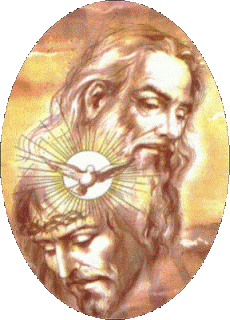On September 17, 1968, the Congress of the United States authorized the President of the United States (then Lyndon B. Johnson), to proclaim National Hispanic Heritage Week. This proclamation urged the people of the United States, especially the educational entities, to observe the week with appropriate ceremonies and activities. President Gerald R. Ford, in 1974, issued a proclamation that particularly urged schools and human rights organizations to participate fully in the celebration of National Hispanic Heritage Week.
Twenty years later, on August 18, 1988, President Ronald Reagan reiterated Ford’s call for a broader recognition of all residents of Hispanic origin. To this end, the Congress approved Public Law 100-402, extending the celebration for a period of 31 days, to be known as NATIONAL HISPANIC HERITAGE MONTH, (from September 15 to October 15 of each year). The United States continues that month-long celebration of the culture and traditions of the residents of this country who have roots in Spain, Mexico and the Spanish-speaking countries of Central America, South America and the Caribbean, and honors the accomplishments of the Hispanic or Latin community who reside in this nation.
As a Hispanic community, we remember and enjoy festivities revolving around our origin, history, culture, the values of our identity and reality in this nation. It is a privileged time each year in which we review our Hispanic state in this nation: our common objectives (where they exist), our efforts, activities, desires, longings, and ideals; our participation in the history and progress of the country; and, above all, the accomplishments that our Hispanic presence has achieved in the overall concert of this great nation’s life.
The Hispanics of several generations have proceeded from the many different corners of Latin America. We have brought with us the richest and most varied cultural expressions, (originating from our historic associations with Spain or Portugal), and most especially, our Catholic faith. We constitute a veritable multitude in this nation. The National Census of the year 2000 found 56 million persons of Hispanic origin living in the United States, making us the largest minority, representing 15% of the total population.
Our numerical growth greatly increases, at the same time, the problems that we as a community must face and resolve equally increase. Looking beyond ourselves to the rest of the very diverse population of the United States, we see the issues that result from our multiculturalism in every field of life: academic, economic, political, cultural, artistic, athletic, religious, etc.
Some of the great problems we face include: a lack of understanding of our own inner being; a knowledge of who we are and of our Hispanic communities (which lack integration and unity); our limited or absent sense of belonging to the Hispanic community present in the United States; our lack of leadership and of interrelationship between the leadership of our varied communities; our lack of common objectives (especially political); the absence of a common vision which could give strength in a unified struggle to reach common goals and achievements in the life and growth of this nation. We don’t even share a common name to define and identify us as a community in relation to the rest of the nation.
Consequently, the recent study done by the PEW Hispanic Center reveals that:
Most Hispanics or Latinos prefer not to be called either “Hispanics” or “Latinos”.
• Approximately 51% of Hispanics in the nation prefer to be identified according to their country of origin.
• Only 49% of those surveyed said that they identify themselves as a Hispanics and/or Latinos.
• Barely 21% said they preferred to be described as Americans.
• 79% of those surveyed said that if they had to do it again, they would come to the United States.
Moreover, in the last five years, in particular, the immigration debate in the United States has been poor, embarrassing, unfavorable and unfair to the Hispanic community. We have been mistreated, legalization processes have been hindered, and social opportunities have been denied, preventing the Hispanic community from being integrated into the national life of this country.
This failure in immigration policy, especially with regard to the Hispanic community present in this nation, gives rise to many different theories, but is due in large measure to our lack of unity, internal understanding and cohesion, as well as the shortage of Hispanic leaders who should represent our needs, concerns, longings, urgencies, and desires.
Given the large number of Hispanics, it is of the utmost importance to both the Hispanic community and the nation, that we not be assimilated, thus losing our identity, but to be integrated with all of our historic riches and our cultural and Christian values within all the fabric of the United States.
The Catholic Church in the United States is being enriched by the increasing number of faithful Hispanics. The nation’s current debate of the immigration laws offer the Church to be “Mother and Teacher” to the Hispanic community and is given the opportunity to advocate for a reform of the laws that are more just and humane. The leadership offered by Archbishop Jose Gomez of the Archdiocese of Los Angeles, and Chairman of the Immigration Committee of the United States Catholic Conference of Bishops, is most promising in helping to achieve a body of laws that will reflect the values of liberty and justice which are the foundation of our nation.









